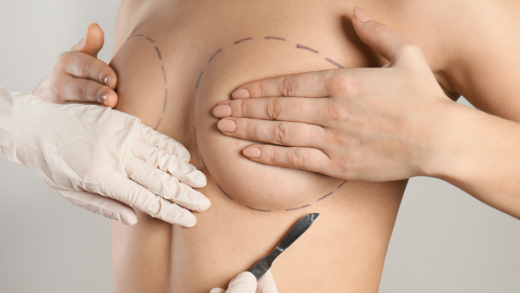Non-surgical cosmetic treatments have gained immense popularity in recent years, providing individuals with options to enhance their appearance without the need for invasive procedures. From injectable fillers to laser therapies, these treatments offer a variety of solutions to address common aesthetic concerns. They can significantly improve skin texture, reduce wrinkles, and add volume, making them appealing choices for those seeking a refreshed look.
Patients appreciate the minimal downtime associated with these procedures, often allowing them to resume their daily activities almost immediately. Many non-surgical options can be tailored to individual needs, ensuring personalised results that align with specific beauty goals. On the Healthy Image Center Website you can browse a range of treatments available to improve your self-confidence. Understanding the myriad of choices available is essential for anyone considering cosmetic enhancements.
As individuals explore these innovative solutions, it becomes crucial to be informed about the benefits and limitations of each treatment. By taking an educated approach, they can achieve satisfying outcomes while maintaining a natural appearance.
Understanding Non-Surgical Cosmetic Treatments
Non-surgical cosmetic treatments have become increasingly popular due to their effectiveness and minimal recovery time. These procedures allow individuals to enhance their appearance without the need for invasive surgery. Key aspects include their benefits and various types offered.
Benefits of Non-Surgical Procedures
Non-surgical procedures offer several advantages over surgical alternatives. They typically involve less risk, as they do not require general anaesthesia.
Patients can often return to their daily activities shortly after treatment, making these options appealing for those with busy lifestyles.
The cost is generally lower compared to surgical procedures. Treatments like injectables or chemical peels can provide significant results with minimal downtime.
Additionally, effects can be adjusted or reversed if desired, allowing clients to achieve their preferred look more gradually.
Types of Non-Surgical Treatments
Various types of non-surgical cosmetic treatments cater to different aesthetic goals. Common options include:
- Injectables: Botox and dermal fillers are popular for reducing wrinkles and adding volume.
- Chemical Peels: These treatments exfoliate the skin, improving texture and tone.
- Laser Therapy: Useful for skin tightening, pigment correction, and hair removal.
- Medical Facials: Customised options that combine various techniques for rejuvenation.
- Non-Surgical Facelifts: Utilise threads or injectables to lift and tighten the skin without surgery.
These treatments vary in their specificity and effectiveness, allowing individuals to select the best options for their needs.
Innovative Techniques and Substances
Recent advancements in non-surgical cosmetic treatments have introduced various innovative techniques and substances. These new techniques and products, administered by professional beverly hills med spa specialists (as well as those based elsewhere), offer effective solutions for skin rejuvenation, wrinkle reduction, and overall enhancement without the need for surgery.
Injectables and Fillers
Injectables, including botulinum toxin injections such as Botox, work by temporarily relaxing facial muscles to reduce the appearance of fine lines and wrinkles. Dermal fillers like Restylane, Sculptra, and Radiesse contain substances such as hyaluronic acid and poly-L-lactic acid, which add volume and hydration to the skin.
These fillers stimulate collagen production, enhancing skin elasticity. Treatments can be tailored to address specific concerns such as nasolabial folds or under-eye hollows. The longevity of results varies; generally, effects last from six months to two years, depending on the product used and individual factors.
Laser and Light-Based Technologies
Laser treatments provide targeted solutions for various cosmetic concerns. Technologies like Fraxel and Morpheus8 use fractional lasers to resurface the skin, reducing wrinkles and pigmentation. These treatments promote healing via collagen remodeling. In addition to these, skin laser treatment can also aid in hair removal, acne treatments, stretch mark corrections, skin tightening, and many more. These techniques tend to enhance appearances with minimum discomfort.
Light-based therapies incorporate techniques such as Intense Pulsed Light (IPL) to improve skin tone and texture. Multi-session treatments often yield optimal results. Alternatives include chemical peels, which use acids to remove the skin’s outer layer. This stimulates cellular turnover and can significantly improve skin appearance.
Skin-Tightening Methods
Non-surgical skin-tightening methods utilise energy forms such as radiofrequency and ultrasound. Techniques like Ultherapy and Thermage deliver heat deep into the skin, promoting collagen production and resulting in tighter skin.
RF microneedling combines microneedling with radiofrequency energy, enhancing skin texture and tightness. The procedure creates micro-injuries that stimulate healing without severe downtime. Patients often notice results within weeks, with improvements lasting up to two years.
These innovative techniques and substances continue to evolve, offering diverse options in non-surgical cosmetic treatments.
Treatment Areas and Expected Outcomes
Non-surgical cosmetic treatments target various areas of the body and face to improve appearance and restore youthful features. These treatments yield specific outcomes, enhancing skin quality and contour.
Facial Enhancements and Rejuvenation
Facial treatments often focus on reducing fine lines and wrinkles across multiple regions, such as the forehead, brows, and under-eye area. Neurotoxins like Botox are commonly used for wrinkle reduction and smoothing frown lines. Additionally, dermal fillers address loss of facial volume, restoring plumpness to the lips and cheeks.
Techniques like thread lifts stimulate elastin production and result in improved skin tightening. Skin rejuvenation can also be achieved through radiofrequency treatments, which enhance skin tone and texture, combating sun damage and pigmentation issues. Many opt for these procedures to address sagging skin and deep creases, leading to a refreshed appearance.
Body Contouring and Sculpting
Body contouring methods, such as CoolSculpting and cryolipolysis, focus on targeted fat reduction. These non-invasive options offer a solution for individuals struggling with stubborn areas, including jowls and stretch marks. Treatments promote body sculpture while also enhancing hydration and skin texture.
Afterbody sculpting, patients may see improvement in skin laxity, creating smoother contours. For many, these techniques not only reduce visible fat but also boost confidence by improving overall body shape. Each procedure is tailored to individual needs, ensuring desired outcomes in aesthetic enhancement.
Practical Considerations and Safety
When considering non-surgical cosmetic treatments, it is crucial to evaluate the qualifications of the provider, understand the potential risks, and assess costs and accessibility. These elements play a significant role in ensuring a safe and effective treatment experience.
Choosing the Right Provider
Selecting a qualified provider is essential for ensuring safety and efficacy. It is advisable to choose professionals with extensive training, such as licensed dermatologists, plastic surgeons, or certified aestheticians. They should have experience with the specific procedures being considered. For example, when seeking Botox San Francisco (or elsewhere), it’s crucial to visit a specialized clinic where providers are trained in facial aesthetics and understand the nuances of injection techniques. This typically ensures natural-looking results while minimizing risks.
Furthermore, verification of credentials can be accomplished through checking qualifications and reviews. Providers should ideally adhere to industry standards and possess FDA-cleared devices for treatments. This reduces the risk of complications and enhances treatment outcomes.
Understanding Potential Risks
Potential side effects from non-surgical cosmetic treatments can vary by procedure. Common side effects include swelling, bruising, and redness at the injection sites. More severe complications may involve allergic reactions or infections.
Patients must discuss these risks with their chosen provider. It is their responsibility to inform clients about what to expect before, during, and after treatment. Understanding these risks helps clients make informed decisions regarding their cosmetic goals and health.
Costs and Accessibility
The cost of non-surgical treatments can fluctuate widely based on the procedure, provider, and location. Typical treatments may range from a few hundred to several thousand pounds. Clients should inquire about any additional fees, such as consultations or follow-up visits.
Accessibility may also be a concern. Urban areas often have a greater number of qualified providers compared to rural locations. Patients should consider travel and appointment availability, which can significantly influence their overall experience and satisfaction with the treatment received.





